Slowtwitch Mailbag – 5
For the Slowtwitch Mailbag this week, we’ll cover two new questions. First, how does one decide which sport to do? Next, we delve into tire flat spotting and the decision-making process for tire pressure.
If you’d like to submit a triathlon-related question to our mailbag, send an email to: Mailbag (at) Slowtwitch (dot) com.
—
Eric writes,
“I've been doing triathlons (mostly halves, but some Olympic distance and 1 full) for three+ years now and I'm getting antsy. I've attended two USAT Nationals and have a 4:44 half-iron distance PR, but I'm getting pulled in another direction. I love triathlon… the training, the prep, the pre-race anxiety, the competition… all of it. But I am continually feeling like I am missing out on something.
You see, the lure of bike racing has taken over. This year I decided to do a few stand-alone bike races and just finished a three-day, three-stage race placing in the top ten in the overall omnium (cat 4-5). It was not my first race, but my best performance and I was third overall in the second stage which was an ITT.
So my question is… should I make the switch from being a triathlete who dabbles in cycling to a cyclist who dabbles in triathlon? What may be some underlying disadvantages that may be clouded from my mind? It seems to me that being able to focus on one sport would make you good a that one sport, whereas having to focus on three different sports only gets you so far in each one. Is that a rational line of thought or am I just nuts?!”
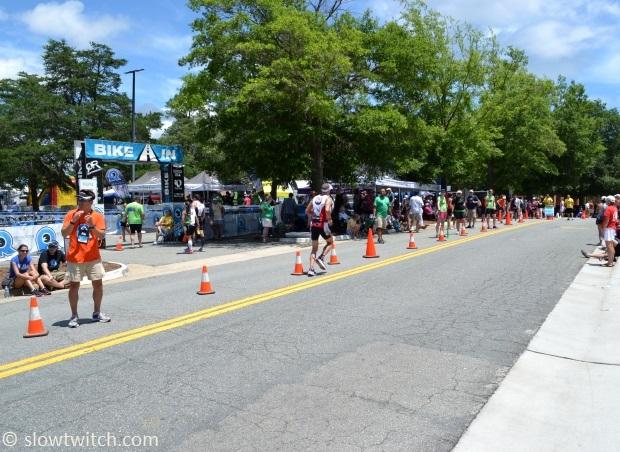
Yes, Eric – you’re completely nuts! Please keep calm and proceed to the nearest psychiatric hospital.
Ahem. Excuse my sarcasm, but you’re not crazy. Your common sense is accurate – if you have a fixed amount of time in your life to train and recover for one sport, you’re very likely going to become better at that sport than if you divide your time between that sport plus two others. Clearly you have some talent in both triathlon and cycling, so I’ll bet you could easily go either way and be successful.
I think the decision really comes down to a simple question: What do you want to do? What is going to be more fun? Whatever it is – do that. Even if you happen to place better in triathlons than cycling races – but you enjoy cycling more – my opinion is that cycling is the better choice. For the vast majority of us, sport is a hobby (and an expense), and doesn’t pay the bills. Life is short, so we ought to make the most of it.
The one caveat with multisport is time. You can’t get around it. Often times, multisport athletes can feel obligated to training a certain amount, because the reality is that it takes more time to train for than almost all single sports. The ‘minimum’ tends to be higher – especially if we start talking about Ironman. For some, that’s no problem and they enjoy every bit of it. Others, however, seem to do it because they feel like they have to. If you have a busy job and life, this could influence your decision on the number of sports. I’ve known people that avoid long-course triathlon racing (or triathlon entirely) until their kids are out of the house, or their work schedule cools down. In 8 hours of training per week, you could be a very fast 10k runner, but would likely struggle with Ironman racing.
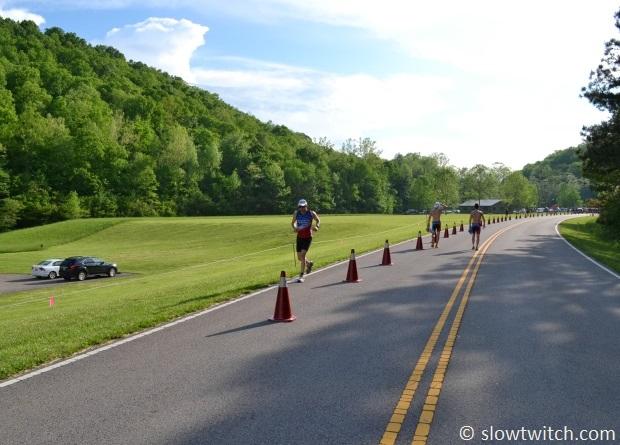
The last thing I’d consider is your overall goal with sport and health. As we all know, racing speed and general health do not necessarily correlate, and can work against each other at the extreme ends of the spectrum. A good indicator of health is a lack of injury and illness – both of which are not uncommon with high-level endurance athletics. One health-related aspect that does favor multisport is the general nature of it. For a given amount of training time you do a greater variety of motions, lending to a smaller chance of overuse injuries. Also look up bone density loss in elite-level swimmers and cyclists. The take-home here is that if you do choose to pursue a single sport, it’s likely worth your while to spend at least some measure of time doing different movements and/or strength training.
I think you’ll make the right choice if you listen to your conscience, and if applicable, your family.
—
Leo writes,
“I installed two new Conti Grand Prix 4000 at the start of the season. The rear tire is wearing ‘flat’ but the front tire has a much more narrow contact surface.
Given I'm 200 lbs, I can't help but feel I'm wearing the rear surface down faster…. due to low air pressure. I ride at 100psi unloaded; should I swap in a new rear tire and bump up the fill pressure to 115psi (until such time I get to 165 lbs)?”
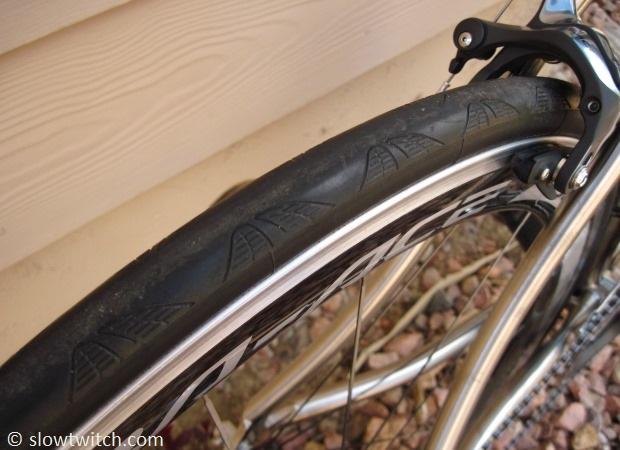
What you’re experiencing is completely normal for riders of all weights. Your rear tire wears out faster than your front tire because there is more weight on it. If you look at your bike from one side, you’ll notice that the saddle and crankset (the primary weight bearing locations) are closer to the rear wheel than the front wheel. This gets mitigated somewhat on a triathlon bike due to the saddle being located several centimeters further forward than most other bikes, and the fact that riding on aerobars puts more weight on the front wheel (however – you will still wear your rear tire faster on a triathlon bike).
You mention low tire pressure as being a possible cause of the flat section at the top of the tire. Lower tire pressure does make the tire spread out more as it contacts the ground, but I don’t find a huge correlation with wear patterns. It likely plays a small part, but I think it is better to choose pressure not to avoid a flat spot, but rather on the merits of that pressure for:
-Your tire width
-Your rim width
-Your body weight
-Weather conditions and road surface quality
-The stiffness of the tire casing
-Your bike handling ability
At 200lbs and 100psi, we’re still missing part of the puzzle: the tire size. The standard Continental Grand Prix 4000 clincher comes in 20, 23, and 25mm sizes. If you have the 20mm version, I think 100psi is definitely too low for your weight. If you have the 25mm version, 100psi is about right. The reason is simple: You don’t want to bottom out your tire on the rim when you ride over a bump, which could damage the rim or pinch flat your inner tube. A larger tire must be ‘squished’ more for that to happen, so you can get away with a lower pressure. Many wheel manufacturers also suggest that wider rims ought to be used with lower tire pressure than narrow rims.
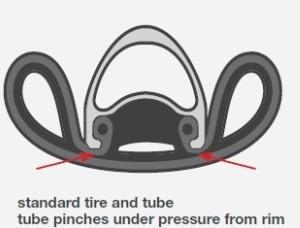
Above image © Trek
Just for example’s sake, I put together a small spreadsheet showing how you might pick tire pressure based on both rim and tire width. Note that this chart is assuming your bodyweight of 200lbs, and is a very general guideline. Perhaps this is your baseline for training in good weather, but you drop ALL pressures by 5psi if it’s raining. Or perhaps you know that your next race is on a very smooth course, so you raise all pressures by 5psi. The two biggest take-homes are 1) That you should not exceed the maximum pressure for your tire or rim, and 2) You experiment for yourself to find what you like.
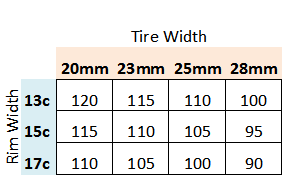
The rim widths listed above are internal (the distance between the two bead hooks inside of the rim).
Some question whether they should rotate their tires to avoid flat spotting the rear. This is certainly an option, but you also have to decide whether or not you want a worn-out tire on your front wheel (a front tire puncture carries more safety implications than a rear tire puncture). My method is this: I’ll rotate tires front/rear ONCE during their life, provided the rear isn’t noticeably more worn than the front. I’ll only do it if I happen to be taking the tires off for some other reason (i.e. changing rim tape, changing to a different wheel) to extend their life a little bit, but I don’t think I’ve ever rotated tires just for the sake of rotating them.




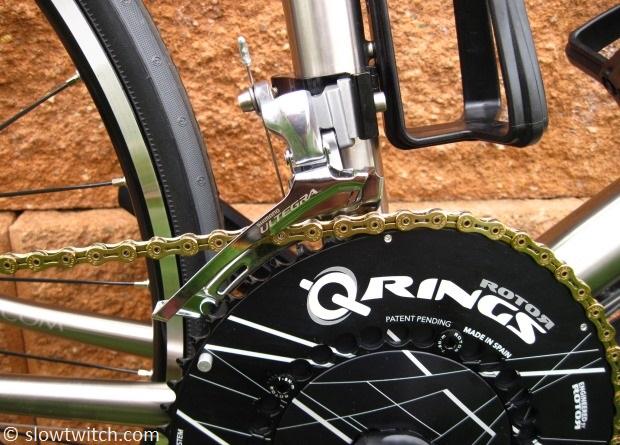
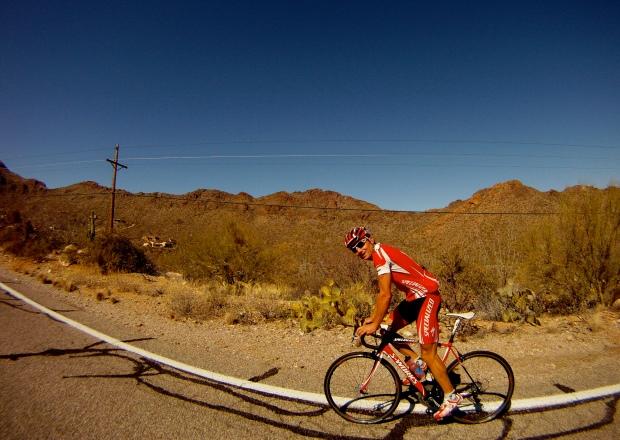
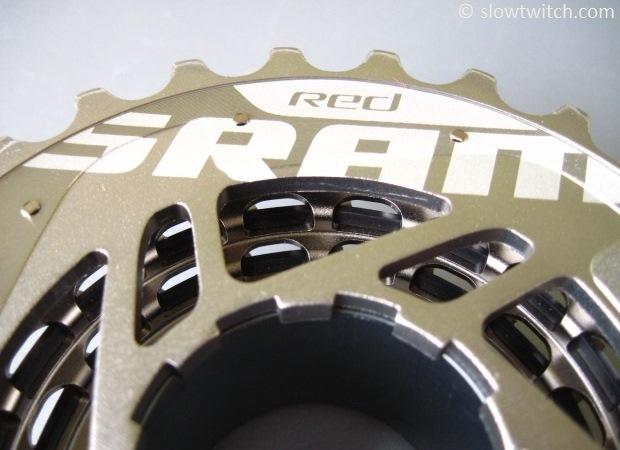

Start the discussion at forum.slowtwitch.com